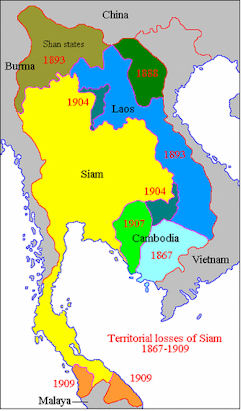

Zitierweise / cite as:
Payer, Alois <1944 - >: Chronik Thailands = กาลานุกรมสยามประเทศไทย. -- Chronik 1992 / B. E. 2535. -- 1. undatiert. -- Fassung vom 2017-03-19. -- URL: http://www.payer.de/thailandchronik/chronik1992a.htm
Erstmals publiziert: 2012-10-12
Überarbeitungen: 2017-03-19 [Ergänzungen] ; 2016-10-31 [Ergänzungen] ; 2016-04-25 [Ergänzungen] ; 2016-02-12 [Ergänzungen] ; 2016-01-19 [Ergänzungen] ; 2015-08-26 [Ergänzungen] ; 2015-05-25 [Ergänzungen] ; 2015-04-15 [Ergänzungen] ; 2014-10-22 [Ergänzungen] ; 2014-09-29 [Ergänzungen] ; 2014-09-19 [Ergänzungen] ; 2014-04-11 [Ergänzungen] ; 2013-06-28 [Ergänzungen] ; 2013-06-11 [Ergänzungen] ; 2013-04-26 [Teilung des Jahrgangs] ; 2013-04-16 [Ergänzungen] ; 2013-04-11 [Ergänzungen] ; 2013-04-06 [Ergänzungen] ; 2013-03-28 [Ergänzungen] ; 013-02-14 [Ergänzungen] ; 2013-01-13 [Ergänzungen] ; 2012-11-12 [Ergänzungen]
©opyright: Dieser Text steht der
Allgemeinheit zur Verfügung. Eine Verwertung in Publikationen, die über übliche
Zitate hinausgeht, bedarf der ausdrücklichen Genehmigung des Herausgebers.
Dieser Text ist Teil der Abteilung
Thailand von
Tüpfli's Global Village Library
ช้างตายทั้งตัวเอาใบบัวปิดไม่มิด
|
Gewidmet meiner lieben Frau Margarete Payer die seit unserem ersten Besuch in Thailand 1974 mit mir die Liebe zu den und die Sorge um die Bewohner Thailands teilt. |
|
Bei thailändischen Statistiken muss man mit allen Fehlerquellen rechnen, die in folgendem Werk beschrieben sind:
Die Statistikdiagramme geben also meistens eher qualitative als korrekte quantitative Beziehungen wieder.
|
Statistische Daten 1992:
|
1992
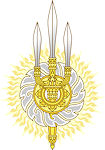
Sulak Sivaraksa (สุลักษณ์ ศิวรักษ์, 1933 - ) über den König in einem Interview in einer US-Zeitschrift:
"He’s a very nice man, but he has no friends, and he knows it. People surround him, flatter him, and so on. In Buddhism, the concept of a good friend is very important. And a good friend is someone who is willing to tell you the truth, willing to criticize you, telling you your weaknesses. As human beings, we all have weaknesses. And sometimes we know, sometimes we don’t... And unfortunately, either with kingship or presidency or whatever, when you are so high up, people flatter you. And they flatter you so often, you believe them." [Zitiert in: Marshall, Andrew MacGregor <1971 - >: A Kingdom in crisis : Thailand's struggle for democracy in the twenty-first century. -- London : Zed, 2014. -- 238 S. ; 22 cm. -- ISBN 978-1-78360-057-1. -- S. 24]
1975 - 1992
Einkommensverteilung:
Abb.: Einkommensverteilung in Quintilen der Bevölkerung, 1975 - 1992
[Datenquelle: Bello (1998), S. 37]
Abb.: Die Reichen und die Superreichen: Ferrari 512 bei Ramkhamhaeng University (มหาวิทยาลัยรามคำแหง), Bangkok, 2009
[Bildquelle: Ian Fuller. -- http://www.flickr.com/photos/ianfuller/3941181280/. -- Zugriff am 2012-02-16. -- Creative Commons Lizenz (Namensnennung, keine kommerzielle Nutzung)]
Abb.: Lage der Ramkhamhaeng University (มหาวิทยาลัยรามคำแหง)
[Bildquelle: OpenStreetMap. -- Creative Commons Lizenz (Namensnennung, share alike)]
Abb.: Die Armen, Bangkok, 2008
[Bildquelle: Sigmund. -- http://www.flickr.com/photos/sigkyrre/2716232221/. -- Zugriff am 2012-02-16. -- Creative Commons Lizenz (Namensnennung, keine kommerzielle Nutzung)]
1992
Ca. 50% der Thai-Männer haben ihren ersten Sex mit einer Prostituierten. Nach Schulabschluss mit 15 oder 16 Jahren bringt sie ein Feund oder älterer Bruder zu einer Prostituierten zur "Aufklärung".
1992
Das heterosexuelle Sexualverhalten der Männer ist äußerst riskant:
käuflicher und gelegentlicher Sex ohne Kondom
viele wechselnde Sexualpartner
die Mehrheit glaubt, für sie bestehe kein Risiko einer HIV-Infektion
1992
มติชนรายวัน (Matichon rai wan): Wichai Chokwiwat über AIDS und Abtreibung
"If mothers with AIDS could choose there would probably be very few that would choose for their child to be born, because 1 in 3 children will be bom with AIDS, and die young. The other 2 in 3 don’t have AIDS, but are orphaned in a few years. In Thailand, most mothers who have AIDS get it from their husband. Therefore, 2 in 3 children who survive, most will be orphaned by both their mothers and fathers from a young age.
Think of the heart of the mother who has to carry the pregnancy, give birth, look after the child that has been born, without knowing whether the child has AIDS or not, until she finds out her child has it, she has to wait until her child becomes sick and dies, and for children who do not have the disease, they will grow up as orphans. What mother and father could rest in peace?
Of those children who are born, if they had a choice, who would want to be born in the stomach of a mother with AIDS?
The law not allowing abortion in this situation, thus forces the mother and child to meet with a horrible fate without choice.
Information from research in June 1991 from the Infectious Diseases Department of the Ministry of Public Health found that approximately 0.79% of pregnant women had AIDS. In one year approximately 950,000 children would be born. Therefore there would be 7,500 children being born of a mother with AIDS...
At present most mothers with AIDS in Thailand catch it from their husbands without knowing a thing about it. Some catch it because they are forced into prostitution. If they had a choice, no wife would sleep with her husband if she knew he had AIDS... but, how many wives know that their husband has AIDS? For most, they find out when they give birth at the hospital.
Most of them get the virus unwillingly, or have to take the fate that they had no part in. Will you leave the law to force these women to face a horrible fate like that? [bold in original]"
[Übersetzt in: Whittaker, Andrea <1967 - >: Abortion, sin, and the state in Thailand. -- London : RoutledgeCurzon, 2004. -- 189 S. : Ill. ; 25 cm. -- ISBN 041533652X. -- S. 102]
1992
Nukul Benchamat, Ex-Herausgeber des Schwulenmagazins Neon, in einem Interview mit Neil Miller über die Reaktion, wenn Eltern entdecken, dass ihr Sohn schwul ist:
"Thai people have adopted the beliefs of Buddhism for thousands of years, in their breath, their soul, and their mind. They have been taught to be peaceful, kind, generous, not to be aggressive or to scold or curse. They might think homosexuality is bad, but they wont criticise It. Still a relative or parent might tell you it is not a good thing. They might say kathoey [กะเทย] is bad, for example, but the point is they wont say aggressively or directly that you are bad because you are gay." [Zitiert in: Jackson, Peter A. <1956 - >: Dear Uncle Go : male homosexuality in Thailand : สวัสดีกรับ อาโก๋ ปากน้ำ. -- Bangkok : Bua Luang, 1995. -- 310 S. : Ill. ; 21 cm. -- ISBN 0942777115. -- Völlige Neubearbeitung von Ders.: Male homosexuality in Thailand : an interpretation of contemporary Thai sources (1989). -- S. 69]
1992
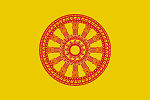
Der Mönch Phra Alongkot Tikkhapanno (อลงกต ติกฺขปญฺโญ, später: พระอุดมประชาทร, 1953 - ) initiiert in Wat Phrabaht Namphu (วัดพระบาทน้ำพุ) in Lop Buri (ลพบุรี) die Behandlung schwer an AIDS Erkrankter. Das Kloster kümmert sich auf um die Waisen von an AIDS verstorbener.
Abb.: Phra Alongkot Tikkhapanno (อลงกต ติกฺขปญฺโญ)
[Bildquelle: th.Wikipedia]
Abb.: Lage von Lop Buri (ลพบุรี)
[Bildquelle: OpenStreetMap. -- Creative Commons Lizenz (Namensnennung, share alike)]
1992

Der Mönch und Umweltaktivist Pongsak Techadhammo (พระอาจารย์ พงษ์ศักดิ์ เตชธัมโม) wird aus dem Mönchsorden ausgeschlossen.
"Ajaan Pongsak Techadhammo [อาจารย์ พงษ์ศักดิ์ เตชธัมโม] was a conservationist monk for many years, but that doesn’t make him special. Green Buddhism, a growing phenomenon in Thailand for decades, has now become a national movement, its temples scattered in forests all over the country. Nor is Pongsak unique for having been defrocked. Several green monks have been forced to leave the clergy after taking on vested interests to protect Thai forests. Pongsak lost the right to wear the saffron robe in 1992, after a bizarre incident in which a photograph showing the monk consorting with a woman was sent anonymously to various media outlets. Pongsak is a frail and meditative man, with a visible tremor, and it is laughable to think of him in a sordid love affair. The people who distributed the picture never came forward. The woman in the photo (whose face is not clearly visible) was never identified. No evidence was offered against Pongsak, and no witnesses testified against him. The photo, in other words, was almost certainly a fake; but a day after it was "leaked," Pongsak agreed to leave the monkhood and step down as abbot of Wat Palad [วัดผาลาด], an idyllic mountainside monastery on Doi Suthep [ดอยสุเทพ] overlooking the northern city of Chiang Mai [เชียงใหม่]. He was replaced by a habitual drunk who boasts of being a former hit man for the mob. Pongsak dismisses the incident with a shrug.
"My robe is off, but in my heart nothing is different," he says. "Some vested interests wanted to build a resort and golf course at Doi Suthep. This is the reason why the picture was released."
When one considers the violent fate that often befalls community activists and low-level officials who fight to protect the environment, Pongsak was probably fortunate. He has changed the color of his robes to white, moved to a remote camp on a mountain in Chom Thong [จอมทอง] district, and now goes by the honorific of Ajaan (Teacher) [อาจารย์] rather than Phra (Monk) [พระ] or Phra Ajaan (Abbot) [พระอาจารย์]. But people treat him with the same respect, still kneel before him, their hands folded in the traditional wai [ไหว้]. And he still makes the same arguments. People should not live in headwater forests, he says, and those who do live there, mostly ethnic hill tribes, should be resettled.
Those beliefs make Pongsak stand out from the crowd, for they run counter to the convictions held so strongly by the mainstream of Thailand’s grassroots environmental movement. There are anywhere from 600,000 to 10 million people living in Thai forests, depending on who’s counting and the classification of forests you’re talking about. Most Thai forestry activists, noting that many forest dwellers have been living in the forests since before they were earmarked as reserves, argue that they should be allowed to stay. Besides, the activists claim there isn’t available land to which the forest dwellers can be relocated, or at least none of the same quality. Moving them would irreversibly destroy their communities for the benefit of city folk who want pristine forests to visit on the weekends, say the activists. They add that rural villagers traditionally lived in harmony with the forest until the cash economy came along, and can do so again if they use sustainable farming techniques and adopt more self-sufficient strategies.
The Thai government sees things differently. In the eyes of the authorities and some conservation groups, the forest dwellers are a major nuisance who destroy the integrity of the country’s conservation zones and compromise the ability of forests to serve as watersheds and habitats for biodiversity and endangered species. The water issue is especially sensitive since the annual cycle of drought followed by flood seems to have worsened as the country’s forests have been cut down. The Royal Forest Department (RFD), which also has vast economic interests at stake in this debate, maintains that encroachment by villagers is the biggest threat to the country’s few remaining forests, and it continually pushes to have forest dwellers resettled.
Pongsak is probably the most eloquent spokesman for this conservationist point of view.
"Man coexisting with the forest: That’s a romantic idea, little more than wishful thinking. People still talk about it because that’s the way they’d like things to be," he explains. "The hill tribe population is growing rapidly. They don’t just farm to live; they farm to sell and with the support of vested interest groups. They have TVs, motorcycles, and cars."
Pongsak agrees with the activists on one point: If forest dwellers returned to subsistence farming (and managed to keep population growth in check), they could live sustainably in the watershed forests. But after decades of living in the mountains, the former monk no longer believes that is a realistic possibility. And he questions whether it is fair to ask the hill tribes to forsake a comfortable lifestyle when the rest of the population is busy pursuing material comforts."
[Quelle: Fahn, James David <1965 - >: A land on fire : the environmental consequences of the Southeast Asian boom. -- Boulder : Westview, 2003. -- 365 S. ; 24 cm. -- ISBN 0-8133-4267-8. -- S. 143ff. -- Fair use]
1992
Bangkok: Gründung von Nonviolence International Southeast Asia (NISEA)
"Nonviolence International Southeast Asia (NISEA) is a part of Nonviolence International and was established in Bangkok in 1992 with the cooperation of regional partners with the aim of creating a community of peace activists. It is a member of the International Action Network on Small Arms (IANSA) targeting armed violence and weapon reduction in Thailand and Cambodia respectively.[1] In the year 2004, NISEA maintained a strong financial position of an income of 3.5 million Thai Baht through various grants and contributions, whereby 900,000 Baht was spent on Southeast Asia Small Arms Reduction Program.[2] In 2005, NISEA was granted NGO in Special Consultative Status with the United Nations Economic and Social Council (ECOSOC). Mission
Nonviolence International South East Asia (NISEA) strives to shape South East Asian societies to make them choose nonviolent methods as a neutral response to conflicts. Its mission includes:[3]
Activities
- Increasing understanding and appreciation of nonviolent vision, strategy and methods;
- Empowering people by enhancing capacities to protect rights and to ensure ownership of and participation in various processes affecting people's lives; and
- Building and supporting a peace constituency that aims to change unjust structures, institutions, policies and laws through long-term nonviolent means.
NISEA aims to fulfill its mission through three core programs that focus on education, empowerment and structural change.
Ending Armed Violence ProgramThe Ending Armed Violence Program focuses on making communities safer through an in depth understanding of why armed violence occurs, as well as strengthening a peace community that advocates an end to armed violence. NISEA has participated actively in various peace advocacies aiming to ban land mines, render the misuse and proliferation of arms and its impact on communities, change people's perception and behavior toward violence, engage non-state armed groups in the areas of Human Rights and International humanitarian law, seek assistance for victims and survivors of armed violence, and propagate a culture of peace.[4] In relation to stopping the use and proliferation of small arms in Thailand, NISEA had:
- Worked closely with other Non-governmental organizations (NGO)s and civil societies of countries to unravel and identify the presence and/or use of small arms during disappearance incidences.[5]
- Coordinated the Million Faces Campaign and took the lead in gathering photos and signatures to support an Arms Trade Treaty.
- Worked with Amnesty International Thailand and the Catholic Commission for Justice and Peace of Thailand on the Million Faces Campaign
Despite efforts made to tackle the issues of armed violence in Thailand, it was reported in 2010 that death due to armed conflicts remained prevalent of about a loss of 4000 lives.[6]
Reclaiming Rights ProgramReclaiming Rights Program seeks to empower the marginalized through campaigning, networking, and solidarity work. Currently, NISEA is concerned with the conflict in Southern Thailand and is involved in creating spaces for civil society actors to have greater participation in promoting peaceful means to end violence. It also facilitates discussion and encourages suggestions with regular reports on national security issues published on its website.
Nonviolence in Action ProgramNonviolence in Action Program seeks to draw lessons and best practices to enhance capacities through education, training, and multi-media resource material development, as it believes that every individual and community has an inherent capacity to handle and prevent armed conflicts nonviolently."
[Quelle: https://en.wikipedia.org/wiki/Nonviolence_International_South_East_Asia. -- Zugriff am 2016-04-20]
1990 - 1992
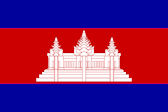

Waffenschmuggel von Kambodscha nach Myanmar:
Abb.: Geschätzter Wert des Waffenschmuggels von Kambodscha nach Myanmar durch Thailand (Verkaufswert an birmanischer Grenze), 1990 - 1992
[Datenquelle: Ganja, girls ... (1998), S. 151]
Abb.: Kambodscha und Myanmar
[Bildquelle: CIA. -- Public domain]
1983 - 1998
Kühe und Produktion von Molkereimilch:
Abb.: Kühe und Produktion von Molkereimilch, 1983 - 1998
[Datenquelle: Thailand in figures (2000), S. 415]
Abb.: Melken, Korat (โคราช), 2005
[Bildquelle: chrisada. -- http://www.flickr.com/photos/chrisada/169431057/. -- Zugriff am 2012-02-10. -- Creative Commons Lizenz (Namensnennung)]
Abb.: Lage von Korat (โคราช)
[Bildquelle: OpenStreetMap. -- Creative Commons Lizenz (Namensnennung, share alike)]
1992 - 2004

Deutsche Entwicklungshilfe: Micro-Finance Linkage Project (in Zusammenarbeit mit Bank for Agriculture and Agricultural Cooperatives)
1992

An der Universität Passau wird ein Lehrstuhl für Sprachen und Literaturen von Thailand und Laos geschaffen. Lehrstuhlinhaber ist Harald Hundius (1939 - ). Nach der Emeritierung von Hundius 2004 wird der Lehrstuhl in einen sozialwissenschaftlichen umgewidmet.
Abb.: Lage von Passau
[Bildquelle: OpenStreetMap. -- Creative Commons Lizenz (Namensnennung, share alike)]
1992
Monatliche Einnahmen von Polizeibeamten an Bestechungsgeldern von illegalen Casinos:
Abb.: Monatliche Einnahmen von Polizeibeamten an Bestechungsgeldern von illegalen Casinos, Thonburi (ธนบุรี), Bangkok, 1992
[Datenquelle: Guns, girls ... (1998), S. 37]
Abb.: Lage von Thon Buri (ธนบุรี)
[Bildquelle: OpenStreetMap. -- Creative Commons Lizenz (Namensnennung, share alike)]
Abb.: Polizist ist ein einträglicher Beruf, Bangkok, 2006
[Bildquelle: mark roy. -- http://www.flickr.com/photos/electricnerve/270410903/. -- Zugriff am 2012-02-16. -- Creative Commons Lizenz (Namensnennung)]
1992
Inbetriebnahme des Landungsschiffs HTMS Surin durch die Royal Thai Navy.
Abb.: HTMS Surin, 2010
[Bildquelle: Mass Communication Specialist 3rd Class Taurean Alexander / Wikimedia. -- Public domain]
1992
Die Asian Development Bank gründet das Entwicklungsprojekt Greater Mekong Subregion (GMS). Sie umfasst:
Yunnan (云南) (China)
Laos
Myanmar
Thailand
Kambodscha
Vietnam
Abb.: Greater Mekong Subregion (GMS)
[Bildvorlage: CIA. -- Public domain]
1992
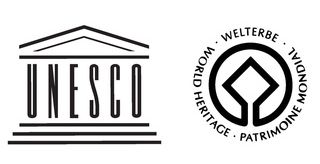
Die archäologische Grabungsstätte Ban Chiang (แหล่งโบราณคดี บ้านเชียง) wird zum UNESCO-Weltkulturerbe ernannt.
Abb.: Lage von Ban Chiang (แหล่งโบราณคดี บ้านเชียง)
[Bildquelle: OpenStreetMap. -- Creative Commons Lizenz (Namensnennung, share alike)]
Abb.: Ausgrabung in Ban Chiang (แหล่งโบราณคดี บ้านเชียง), frühe Periode, 2012
[Bildquelle: Brian Hoffman. -- http://www.flickr.com/photos/buzzhoffman/6885255394/. -- Zugriff am 2012-04-09. -- Creative Commons Lizenz (Namensnennung, keine kommerzielle Nutzung, share alike)]
Abb.: Ausgrabung in Ban Chiang (แหล่งโบราณคดี บ้านเชียง), mittlere Periode, 2012
[Bildquelle: Brian Hoffman. -- http://www.flickr.com/photos/buzzhoffman/7031357561/. -- Zugriff am 2012-04-09. -- Creative Commons Lizenz (Namensnennung, keine kommerzielle Nutzung, share alike)]
Abb.: Ausgrabung in Ban Chiang (แหล่งโบราณคดี บ้านเชียง), späte Periode, 2012
[Bildquelle: Brian Hoffman. -- http://www.flickr.com/photos/buzzhoffman/7031373535/. -- Zugriff am 2012-04-09. -- Creative Commons Lizenz (Namensnennung, keine kommerzielle Nutzung, share alike)]
"Ban Chiang (in Thai บ้านเชียง) ist eine Ortschaft im Nordosten Thailands. Sie liegt im Landkreis Nong Han (หนองหาน) der Provinz Udon Thani (อุดรธานี). Einwohner: 3.000 (2000)
LageBan Chiang liegt etwa 50 Kilometer östlich der Provinzhauptstadt Udon Thani an der Grenze zur Provinz Sakon Nakhon (สกลนคร).
Wirtschaft und BedeutungFrüher lebten die Menschen hier eher ärmlich von den kargen Ernten der Reisfelder und Plantagen der Umgebung. Jetzt ist der Tourismus die Haupteinnahmequelle von Ban Chiang, der von den sensationellen Funden aus der Bronzezeit angezogen wird.
GeschichteBis 1967 ging man davon aus, dass Ban Chiang - so wie die meisten anderen Dörfer und Städte der Umgegend - etwa um 1820 von Laos aus besiedelt worden war. Und schon seit dieser Zeit gibt es immer wieder Berichte und Zeugnisse von Funden: Knochen, Keramiken, Metallwerkzeuge usw.
1966 machte der US-Amerikaner Steve Young (Sohn des damaligen amerikanischen Botschafters in Thailand) die Archäologen in Bangkok auf die Stätte aufmerksam. Zum Vorschein kamen in zwei Kampagnen (1966-1967 und 1972) sensationelle Funde, die darauf hindeuteten, dass die Gegend bereits vor fast 6000 Jahren besiedelt war und eine hochentwickelte Kultur beherbergte. Erst bei späteren Grabungen konnte genügend organisches Material für eine Radiokarbon-Datierung gewonnen worden, wodurch die Anfänge von Ban Chiang auf das 2. Jahrtausend v. Chr. neu datiert wurden.
Feine Keramiken mit Spiral- und Bandornamenten, stilisierte Pflanzen und Tiere und naturbelassene Tongefäße mit eleganten Formen und ideenreichen Mustern (z.B. Wellenmuster, Blätter, Daumenabdrücke) wurden entdeckt. Sie zählen zu den ältesten Keramik-Mustern der Erde. Die größte Aufmerksamkeit erhielt die Grabung jedoch durch die bronzezeitlichen Werkzeuge, die in Südostasien einmalig sind. Hätte sich die ursprüngliche Datierung bestätigt, dann hätte zur Zeit der europäischen Jungsteinzeit hier die Bronzezeit (parallel mit der Entwicklung in Mesopotamien) begonnen. Die Ähnlichkeit der Muster und der Farbgebung zwischen den Funden in Ban Chiang und denen in Mesopotamien ist verblüffend. Funde konnten bis ins 5. Jahrhundert n. Chr. nachgewiesen werden, danach sind die Bewohner offenbar verschwunden.
1992 wurde Ban Chiang von der UNESCO als Weltkulturerbe anerkannt.
Sehenswürdigkeiten
- Nationalmuseum Ban Chiang - Ausgrabungsstücke werden gezeigt (mit englischen Erklärungen) mit Dioramen, die Ausgrabung und früheres Leben zeigen, und in der Nähe befindet sich eine Originalfundstelle"
[Quelle: http://de.wikipedia.org/wiki/Ban_Chiang. -- Zugriff am 2012-04-09]
1992
Die Unterkünfte im Khao Yai National Park (อุทยานแห่งชาติเขาใหญ่) werden geschlossen, da überall Müllberge lagen und Motorradfahrer rasten herum. Auch der Golfplatz im Nationalpark wird geschlossen.
Abb.: Lage des Khao Yai National Park (อุทยานแห่งชาติเขาใหญ่)
[Bildquelle: OpenStreetMap. -- Creative Commons Lizenz (Namensnennung, share alike)]
1992

Es erscheint der Song
Pumpuang "Pueng" Duangjan [พุ่มพวง "ผึ้ง" ดวงจันทร์, 1961 - 1992]: ส้มตำ ["Papaya-Salat"]
Text und Musik: Prinzessin Maha Chakri Sirindhorn (สมเด็จพระเทพรัตนราชสุดา เจ้าฟ้ามหาจักรีสิรินธร รัฐสีมาคุณากรปิยชาติ สยามบรมราชกุมารี, 1955 -)
Der Song auf Spotify:
URI: spotify:track:0WJG7FDduU4uAi9KjX8D7C
URL: https://open.spotify.com/track/0WJG7FDduU4uAi9KjX8D7C
Abb.: Handschriftlicher Text von Prinzessin Sirindhorn
Abb.: Cover einer späteren Ausgabe auf Karaoke-CD
1992
Es erscheint der Song
พงษ์เทพ กระโดนชำนาญ [Phongthep Kradonchamnan] <1953 - >: หนุ่มก่อสร้าง ["Junge Bauarbeiter"] in der Audiokassette คนที่เรารัก ["Leute, die wir lieben"]
Der Song auf Spotify:
URI: spotify:track:3TdEkcBqvgI6vqBai9LxJG
URL: https://open.spotify.com/track/3TdEkcBqvgI6vqBai9LxJG
Abb.: Phongthep Kradonchamnan [พงษ์เทพ กระโดนชำนาญ], 2007
[Bildquelle: th.Wikipedia. -- GNU FDLicense]
Abb.: Kassettentitel
[Fair use]
1992
Es erscheint der Song:
ยิ่งยง ยอดบัวงาม [Yingyong Yotbua-ngam] <1962 - >: สมศรี [Somsri]
Der Song auf Spotify:
URI: spotify:track:7F8bp0F7lgahQc8ram41au
URL: https://open.spotify.com/track/7F8bp0F7lgahQc8ram41au
0
Abb.: Spätere CD-Hülle
[Fair use]Der Song wird ein Hit. Die Produktionsfirma nimmt angeblich 50 Mio. Baht ein. Der Komponist Yingyong erhält 12.000 Baht.
1992
Es erscheint das Album
เจินเจิน บุญสูงเนิน [Jern-jern Bunsung-nern] <1957 - >: ฉันก็เป็นผู้หญิงคนหนึ่ง ["Ich bin sozusagen eine Frau"]Jern-jern ist ein Transsexueller.
Abb.: Kassetten-Cover
1992 (?)
Es erscheint der Song:
เพชร พนมรุ้ง [Phet Phanomrung] <1941 - >: ลูกทุ่งเสียงทอง [Luk Tung mit goldnener Stimme]. -- Der Sänger ist King of phleng ho [เพลงเหาะ, Jodeln] - Thai Western und Country Musik.Der Song auf Spotify:
URI: spotify:track:2QFTUM8DGWZnUxCZsWWqG1
URL: https://open.spotify.com/track/2QFTUM8DGWZnUxCZsWWqG1
Abb.: CD-Hülle
[Fair use]
1992
Start der Comic-Serie über Noo Hin (หนูหิ่น) des Cartoonisten Padung Kraisri (ผดุง ไกรศรี, 1960 -). Noo Hin ist ein 17jähriges Hausmädchen aus dem Isaan, das in Bangkok bei im Mittelstands-Haushalt von Miss Milk (มิลค์) und deren Schwester Som-O (ส้มโอ) arbeitet.
Abb.: Noo Hin (หนูหิ่น)
[Bildquelle: th.Wikipedia. -- Fair use]
Abb.: Einbandtitel
[Bildquelle: th.Wikipedia. -- Fair use]
Abb.: Cartoonist Padung Kraisri (ผดุง ไกรศรี
[Bildquelle: th.Wikipedia. -- Fair use]
1992
Erste Nummer der Comics-Reihe ซน แสบ ใส แต่ใจเดียวกัน von ผดุง ไกรศรี.
Abb.: ซน แสบ ใส แต่ใจเดียวกัน
[Bildquelle: th.Wikipedia. -- Fair use]
1992
Es erscheint der erste Band der Krimi-serie Vincent Calvino von Christopher G. Moore (1952 -)

Abb.:
Einbandtitel verschiedener Ausgaben
[Bildquelle:
http://jmmnewaov2.wordpress.com/2012/04/11/vincent-calvino-the-bangkok-thailand-based-p-i-created-by-christopher-g-moore/.
-- Zugriff am 2013-03-28. -- Fair use]
|
"Christopher G. Moore (* 8. Juli 1952) ist ein kanadischer Schriftsteller, der in Bangkok lebt und arbeitet. Leben und WerkIn seinen den Kriminalromanen angelehnten Werken beschreibt er das Leben in Südostasien, insbesondere Thailand. Die Stadt Bangkok, in der er seinen Protagonisten, den Privatdetektiv Vincent Calvino angesiedelt hat, ist der hauptsächliche Schauplatz seiner Romane, in denen sowohl die thailändische Gesellschaft als auch das Leben der dort ansässigen ausländischen Expats (Auswanderer) beschrieben wird. In Vancouver aufgewachsen, arbeitete Moore nach seinem Studium in Oxford zunächst als Professor der Rechtswissenschaft an der Universität von British Columbia. 1983 entdeckte er während einer Asienreise Thailand und ließ sich daraufhin als freier Schriftsteller in Bangkok nieder. Seine ersten Texte veröffentlichte er über das Internet. Als Autor ist er besonders auf dem asiatischen Markt sehr erfolgreich. Auszeichnungen
In der Vincent-Calvino-Reihe sind bisher in der Originalsprache Englisch erschienen:
Einige der Geschichten um den Privatdetektiv Vincent Calvino sind in 12 Sprachen erhältlich. In Deutsch sind bislang erschienen:
The Land of Smiles Trilogy
Einzelwerke
Sachbuch
[Quelle: http://de.wikipedia.org/wiki/Christopher_G._Moore. -- Zugriff am 2013-03-289 |
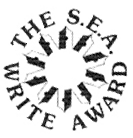
Saksiri Meesomsueb (= Kittisak) (ศักดิ์ศิริ มีสมสืบ, 1957 - ) erhält den Southeast Asian Writers Award für มือนั้นสีขาว
Abb.: Einbandtitel einer der Ausgaben
1992
Es erscheint
Apinan Poshyananda [อภินันท์ โปษยานนท์] <1966 - >: Modern art in Thailand : nineteenth and twentieth centuries. -- Singapore : Oxford UP, 1992. -- 259 S. : Ill ; 27 cm. -- ISBN 0 19 588562 7
Abb.: Umschlagtitel (Fair use)
1992
The Guinness Book of Records nennt The Royal Dragon Restaurant (มังกรหลวง), Bangkok, das größte Restaurant der Welt. Es bietet über 1000 verschiedene Gerichte an.
Abb.: The Royal Dragon Restaurant (มังกรหลวง), 2006
[Bildquelle: Keng Susumpow. -- http://www.flickr.com/photos/kengz/269032434/. -- Zugriff am 2012-06-12. -- Creative Commons Lizenz (Namensnennung)]
1992 - 2003, 2005, 2013 -
Das Autorennen Thailand Rally ist Bestandteil des Asia-Pacific Rally Championship (APRC)
Abb.: ®Logo
Abb.: Zum Beispiel: Veranstaltungskalender des APRC 2014
1992

BBC Channel 4 sendet den Dokumentarfilm Ladyboys von Jeremy Marre. Der Film berichtet über zwei Teenager Kathoey (กะเทย, Transgeneder)
"Ladyboys is a 1992 documentary film about the struggle of two teenage kathoey, or Thai male-to-female transgender persons, to leave the rural countryside and become famous transvestite performers in the glamorous cabarets of Pattaya. The film was produced by Jeremy Marre. It was made by Harcourt TV for Channel 4. The documentary opened at the San Francisco Film Festival." [Quelle: http://en.wikipedia.org/wiki/Ladyboys_%28film%29. -- Zugriff am 2014-09-19]
1992-Ende

Aufgrund eines "Master Plan on the Environment" werden fünf Mien-Dörfer (เมี่ยน - เย้า / Yao) in Tambol Pha Chang Noi (ผาช้างน้อย), Amphoe Pong (ปง) für illegal erklärt und die Bewohner müssen sie räumen. Ursprünglich waren sechs Dörfer auf der Liste der illegalen Dörfer, aber in einem Dorf ist eine von der Königinmutter Srinagarindra (สมเด็จพระศรีนครินทราบรมราชชนนี, 1900 - 1995) gestiftete Schule, die Lehrer von der Border Patrol Police (ตำรวจตระเวนชายแดน) hat. Dieses Dorf wurde darum aus der Liste gestrichen.
Abb.: Lage von Amphoe Pong (ปง)
[Bildquelle: OpenStreetMap. -- Creative Commons Lizenz (Namensnennung, share alike)]
Abb.: "A rare moment of royal attention in the ethnic minority area: H.R.H. Princess Maha Chakri Sirindhorn [สมเด็จพระเทพรัตนราชสุดา เจ้าฟ้ามหาจักรีสิรินธร รัฐสีมาคุณากรปิยชาติ สยามบรมราชกุมารี, 1955 - ], flanked by Border Patrol Police [BPP - ตำรวจตระเวนชายแดน], in Phachangnoi [ผาช้างน้อย] tambol in 1993. On her visit she opened a library at a school run by the BPP. The ethnic minority people expressed disappointment that the visit was not about them and that they were not even visible in the television coverage of the event. Note the soldier on the left instructing the chao khao [ชาวเขา] to pay respect properly."
[Quelle für Text und Bild: Hjorleifur Jonsson: Mien relations : mountain people and state control in Thailand. -- Ithaca : Cornell, 2005. -- 198 S. : Ill ; 24 cm. -- ISBN 0801472849. -- S. 111. -- Fair use]
1992
Architekt Thanit Chindavanig (ธนิต จินดาวณิค) und Architektin Nalinee Chindavanig (นลินี จินดาวณิค): Fertigstellung des Hauses
Chindavanig House, Bangkok
1992

Architekt Bill Bensley und Architektin Saichol Saejew (สายชล แซ่จิว) von Bensley Design Studio: Fertigstellung des Hauses
Ban Bill Bensley, Bangkok
1992
Briefmarken:
1992

Es erscheint;
Carruthers, Jean ; Carruthers, Alastair: Treatment of Glabellar Frown Lines with C. Botulinum-A Exotoxin. In: J. Dermatol. Surge Oncol. 18:(1992), S. 17–21. -- über den glättenden Effekt von Botulinustoxin A auf Hautfalten.
Seither wird das Toxin im kosmetischen Bereich off-label eingesetzt. Eine Zulassung für diese Indikation erhalten Präparate erst ab 2002.
Abb.: Reklame für Botox-Behandlung durch das BNH Hospital Bangkok, 2016
[Fair use]
"Botulinumtoxin (BTX), auch Botulinum-Neurotoxin (BoNT), Botulismustoxin, Botulinustoxin, Botulin, Handelsname für BTX-A zum Beispiel Botox, ist ein Sammelbegriff für mehrere sehr ähnliche neurotoxische Proteine. Die Neurotoxine werden von verschiedenen Stämmen der Bakterienspezies Clostridium botulinum, Clostridium butyricum, Clostridium baratii sowie Clostridium argentinense[1] ausgeschieden und sind damit Exotoxine.[2] Die Giftwirkung dieser Proteine beruht auf der Hemmung der Erregungsübertragung von Nervenzellen, was neben Störungen des vegetativen Nervensystems insbesondere eine Muskelschwäche bis hin zum Stillstand der Lungenfunktion zur Folge haben kann. Botulinumtoxin ist eines der stärksten bekannten Gifte. Die LD50-Werte für Mäuse reichen von 30 pg/kg bei intravenöser Gabe bis 4 ng/kg bei subkutaner Aufnahme.[3] Bei Inhalation sind 3 ng/kg tödlich.[4] Während früher das C. botulinum als Verursacher der Lebensmittelvergiftung Botulismus sehr gefürchtet war, werden die von ihm erzeugten Proteine seit den 1980er-Jahren auch zu medizinischen Zwecken eingesetzt, vorwiegend zur Behandlung neurologischer Bewegungsstörungen (Dystonie) sowie seit 1992 in der ästhetischen Chirurgie zur Glättung von mimisch bedingten Falten.[5][6]
C. botulinum kommt ubiquitär vor allem im Erdboden vor. "
[Quelle: https://de.wikipedia.org/wiki/Botulinumtoxin. -- Zugriff am 2016-04-25 ]
ausführlich: http://www.payer.de/thailandchronik/ressourcen.htm
Zu Chronik 1992 / B. E. 2535. -- 2. datiert